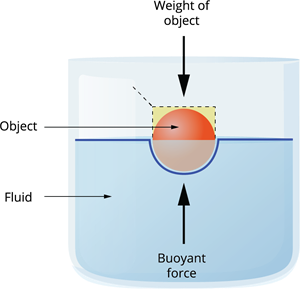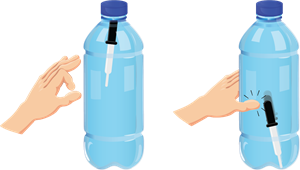PDF chapter test TRY NOW
When a body is partially or entirely submerged in a fluid, it receives an upward force due to the fluid surrounding it. We also know that pressure is higher at the bottom of the liquid and lower at the top. Therefore, the object is pushed upward by force created by the pressure differences. This is known as buoyant force, and the phenomenon is known as buoyancy.
The force that causes an object to float is called buoyancy or buoyant force.

Buoyant force acting on the objects
The objects with a relatively high volume and low density are the most buoyant. If the object weighs less than the weight of the water that has displaced(density is low), the buoyant force is greater, and the object floats (referred as positively buoyant). However, if an object's weight exceeds the amount of water it has displaced (density is greater), the buoyant force is reduced, and the object will sink.
Cartesian driver:

Cartesian driver
The Cartesian diver is a demonstration of the principle of buoyancy. It is a clay-filled pen cap. The Cartesian diver holds just enough liquid to float in a liquid bath; the rest of its capacity is filled with air. When you press the bath, more water enters the diver, increasing its average density and causing it to sink.
